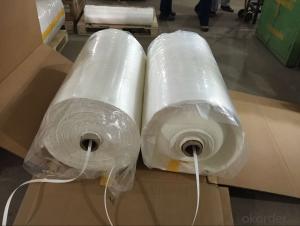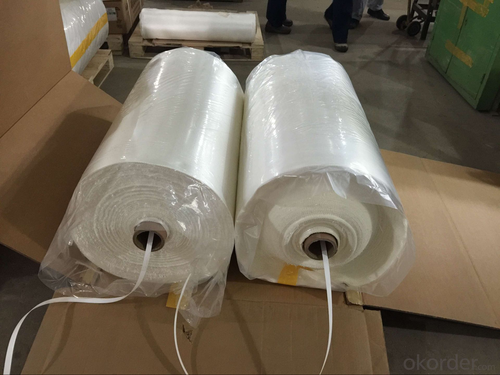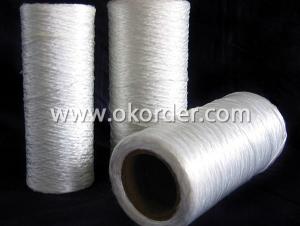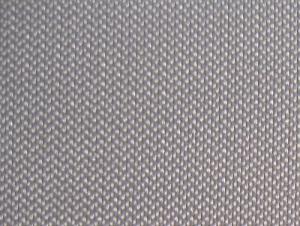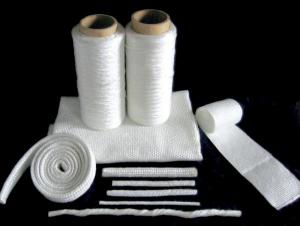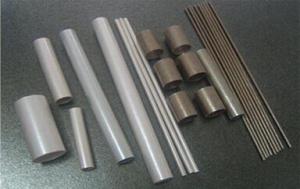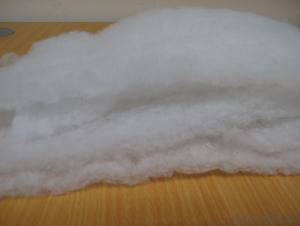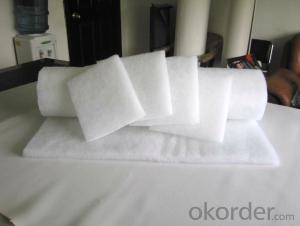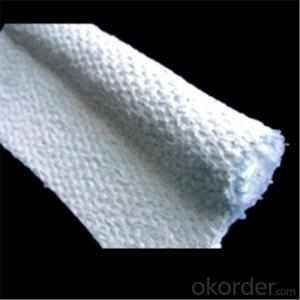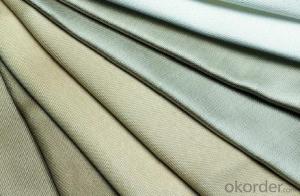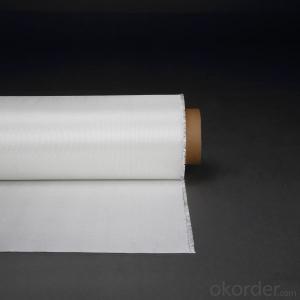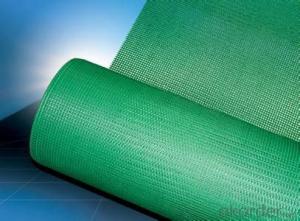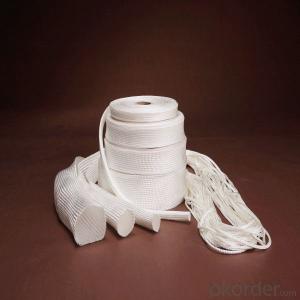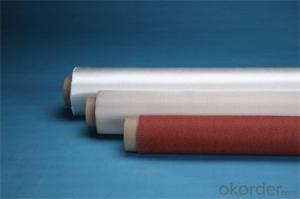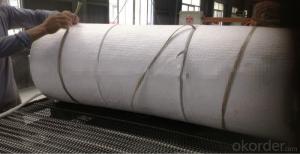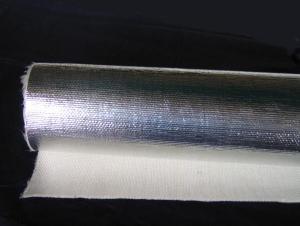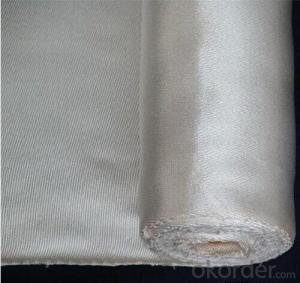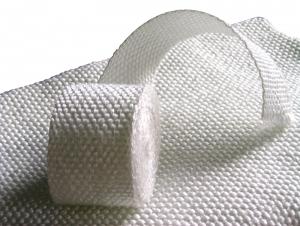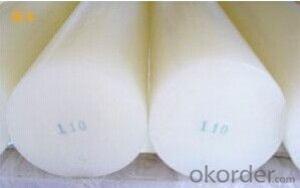Glass Fiber Textiles - 18oz Silica Fiberglass Cloth Resisting 1000°C for Heat Resistance
- Loading Port:
- China main port
- Payment Terms:
- TT OR LC
- Min Order Qty:
- 1000 m
- Supply Capability:
- 100000 m/month
OKorder Service Pledge
OKorder Financial Service
You Might Also Like
Product Description
Silica fiberglass is inorganic fiber that contents more than 96% of SiO2, it's resistant to high temperature, soft point 1700°C, long term service temperature 900 °C, it can work 10 minites at 1450 °C and keeps good state at 1600 °C for 15 seconds. For it's properties of chemical stability, high temperature resistance and ablation resistance, it widely used in aviationand aerospace, metallurgy, chemical, building material and fire fighting industry, etc.
Our factory is the only one that specialized manufacture silica fiberglass in China and has the production line of the whole process from marble making, fiber forming, weaving, and finish. The strength of silica fiberglass made from Na2O-B2O3-SiO2 system glass is 3-5 times higher than that from E glass. The products sold to more than 20 provinces, cities, autonomous regions and exported to foreign countries.
Silica fiberglass products are available in forms of needled mat, fabric, scrim, staple yarn, chopped strand and cord, etc.
Product Properties
1> SiO2>=96%
2> soft point nearly 1700°C, long-time working at 900°C
3> low thermal conductivity
4> good chemical stability
5> good electrical insulation
6> low thermal shrinkage
7> Non-asbestos product without pollution
8> good process performance
Product Uses
High temperature resistant, insulation and sealing material
High temperature ablation resistant material
Fireproof material (for fireproof protective clothe, fireproof curtain, fire blanket)
Dust collecting in media of high temperature gas and filtration in media of high temperature liquid
Filter for molten metal
Distinguisher, insulation material, filtration of automobile and motorcycle
Protective material for welding
Electricity insulation material
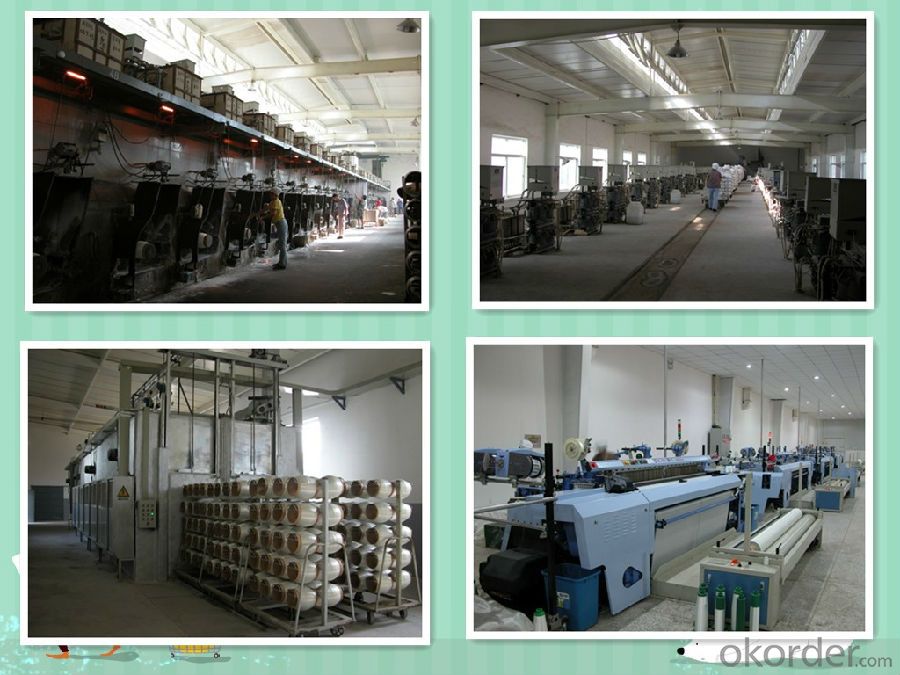
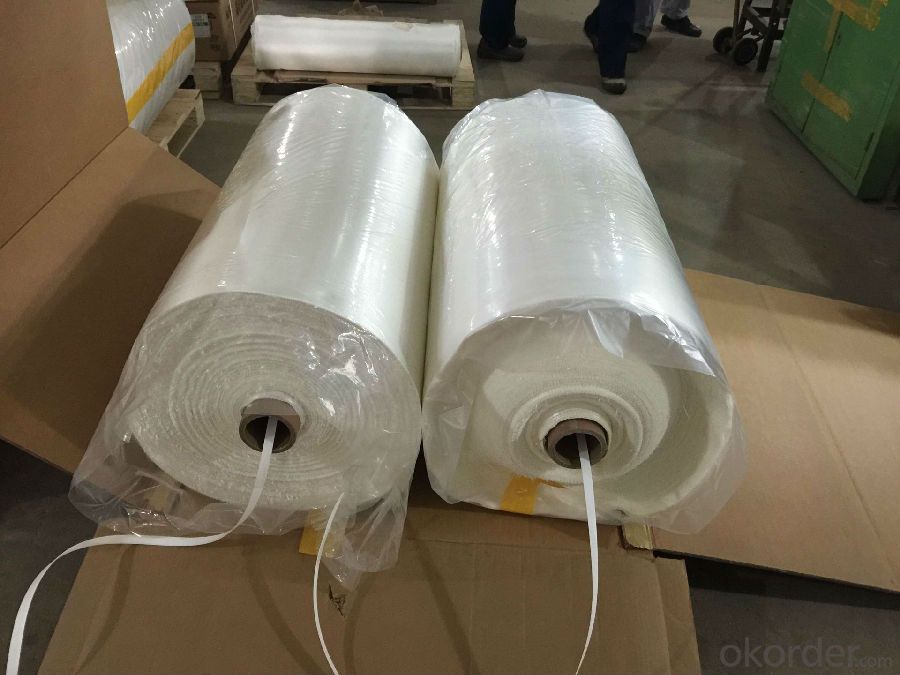
- Q: Can glass fiber textiles be used in curtains and drapes?
- Curtains and drapes can indeed incorporate glass fiber textiles. These textiles, alternatively referred to as fiberglass fabrics, possess lightness, durability, and exceptional thermal and acoustic insulation capabilities. These attributes render them appropriate for curtains and drapes usage, facilitating temperature regulation and soundproofing within a room. Furthermore, glass fiber textiles frequently boast fire-resistant properties, an invaluable safety characteristic for curtains and drapes. All in all, glass fiber textiles provide a practical and functional means to integrate insulation and safety into curtains and drapes.
- Q: Can glass fiber textiles be used for soundproofing?
- Yes, glass fiber textiles can be used for soundproofing. They have excellent sound absorption properties due to their porous structure, which helps to reduce noise transmission and improve acoustics in various environments.
- Q: Is glass fiber textile resistant to fire?
- Yes, glass fiber textile is highly resistant to fire. Glass fibers are made from molten glass that is then spun into thin and flexible threads. These fibers have a high melting point and do not support combustion. In fact, glass fiber textiles are often used in fire-resistant clothing, curtains, and insulation materials. They provide excellent protection against heat and flames, as they do not ignite easily and can withstand high temperatures without melting or releasing toxic gases. Additionally, glass fiber textiles have low thermal conductivity, which means they do not transfer heat quickly, further enhancing their fire-resistant properties. Overall, glass fiber textiles are a reliable and effective choice for applications where fire resistance is crucial.
- Q: How do glass fiber textiles affect light transmission?
- Due to their unique properties, glass fiber textiles have the ability to significantly influence the transmission of light. These textiles consist of transparent glass fibers with a high refractive index, enabling them to efficiently transmit light. When woven together, these fibers form a mesh-like structure that can either enhance or impede the transmission of light, depending on how they are arranged. To enhance light transmission, glass fiber textiles can be designed to be optically clear, allowing light to pass through without obstruction. This makes them suitable for applications such as window screens or fabric used in architectural designs that aim to maximize the penetration of natural light. Additionally, the transparency of glass fibers ensures minimal loss of light intensity, making them ideal for applications where brightness is crucial. On the other hand, glass fiber textiles can also be manipulated to control light transmission for specific purposes. By adjusting the density or pattern of the fibers, these textiles can scatter or diffuse light, reducing glare and creating a more even distribution of light. This characteristic is advantageous in applications such as diffusers used in lighting fixtures or textile displays that require uniform illumination. Moreover, glass fiber textiles can be coated with different materials to further regulate light transmission. For example, applying a reflective coating can transform the fabric into a mirror, reflecting light instead of allowing it to pass through. This can be useful in applications such as privacy screens or optical devices that require redirection of light. In summary, glass fiber textiles can have a significant impact on light transmission, either by facilitating efficient transmission or by altering the light path through scattering or reflection. Their versatile properties make them suitable for a wide range of applications, from enhancing natural light to creating specialized optical effects.
- Q: How does glass fiber textile perform in terms of durability?
- Glass fiber textile is known for its exceptional durability. It has high tensile strength, meaning it can withstand heavy loads and resist tearing or breaking. Additionally, glass fiber textile is highly resistant to chemicals, moisture, and UV radiation, making it suitable for both indoor and outdoor applications. Its durability allows it to maintain its structural integrity and appearance over time, ensuring long-lasting performance in various environments.
- Q: Can glass fiber textiles be used for insulation in appliances?
- Yes, glass fiber textiles can be used for insulation in appliances. They have excellent thermal insulation properties and are commonly employed in various appliances such as ovens, refrigerators, and water heaters to minimize heat loss and improve energy efficiency.
- Q: How about the alkali fiberglass and alkali free fiberglass?
- The uniformity of the quality of the unit area is especially high, so the requirement of yarn is especially highThe alkali continuous glass fiber yarn is mainly used for weaving glass fiber screen, duct cloth and filtrationCloth, cloth and other products, as of electronic cloth requirements for these products, the main production enterprisesIs the crucible enterprises, most of the 200 hole, 400 hole wire drawing bushing, yarn product qualityThe volume ratio is less than that of the tank furnace.
- Q: Can glass fiber textiles be used in reinforcement of paints?
- Glass fiber textiles, commonly referred to as fiberglass, have the capability to reinforce paints. Composed of delicate glass fibers, these textiles possess remarkable strength and tensile strength, rendering them suitable for the reinforcement of various materials, including paints. The addition of glass fiber textiles to paint brings about an enhancement in its mechanical properties and durability. Acting as a reinforcement, these fibers provide additional strength and resistance against cracking, chipping, and peeling. This proves particularly advantageous for paints applied to surfaces exposed to harsh conditions or high levels of stress. In addition to enhancing the mechanical properties, glass fiber textiles also augment the thermal and chemical resistance of paints. With its well-known resistance to heat and chemicals, fiberglass is an ideal choice for paints utilized in environments characterized by these factors. Moreover, glass fiber textiles contribute to reducing the overall weight of paint due to their lightweight nature. This proves advantageous in applications where weight is a concern, such as the aerospace or automotive industries. In conclusion, glass fiber textiles effectively reinforce paints by improving their strength, durability, thermal resistance, chemical resistance, and reducing their weight. However, it is crucial to ensure proper dispersion and adhesion of the fibers within the paint matrix in order to maximize their benefits.
- Q: What are the different weaving patterns used for glass fiber textile?
- There are several different weaving patterns commonly used for glass fiber textiles, each with its own unique characteristics and applications. Some of the most common weaving patterns for glass fiber textiles include plain weave, twill weave, satin weave, leno weave, and basket weave. 1. Plain weave: This is the simplest and most common weaving pattern. It involves interlacing the warp and weft yarns in an over-under pattern, creating a balanced and strong fabric. Plain weave glass fiber textiles are often used in applications where strength and durability are important, such as reinforcement materials in composites. 2. Twill weave: This pattern is characterized by a diagonal line or rib effect on the fabric surface. Twill weave glass fiber textiles are known for their excellent drapability and drapeability, making them suitable for applications like clothing, upholstery, and reinforcement in curved composite structures. 3. Satin weave: Satin weave glass fiber textiles have a smooth and lustrous surface due to the way the yarns are interlaced. This weaving pattern creates long floats on the fabric surface, resulting in a soft and flexible material. Satin weave glass fiber textiles are commonly used in high-end applications such as luxury apparel, automotive interiors, and decorative fabrics. 4. Leno weave: Leno weave is a unique pattern that involves crossing two warp yarns over each other and then interlacing with the weft yarn. This creates a stable and open fabric structure, often used in applications that require good ventilation and transparency, such as filters, mosquito nets, and curtains. 5. Basket weave: In basket weave, two or more warp yarns are woven together as one, and the weft yarns are interlaced between these pairs. This creates a fabric with a distinctive checkerboard-like appearance. Basket weave glass fiber textiles are commonly used in applications that require a balance between strength and flexibility, such as bags, upholstery, and reinforcement in composite structures. These different weaving patterns offer a variety of properties and characteristics that make them suitable for different applications. The choice of weaving pattern for glass fiber textiles depends on factors such as desired strength, flexibility, drapeability, transparency, and surface appearance.
- Q: How do glass fiber textiles compare to metal fiber textiles?
- Glass fiber textiles and metal fiber textiles have some key differences. Glass fiber textiles are made from strands of glass fibers, while metal fiber textiles are made from strands of metal fibers. One main difference is their strength. Metal fiber textiles are typically stronger than glass fiber textiles, making them more suitable for applications that require high tensile strength and durability. Glass fiber textiles, on the other hand, are more lightweight and flexible, making them easier to handle and manipulate. Another difference is their resistance to corrosion. Metal fibers may be susceptible to rust and corrosion, especially when exposed to moisture and certain chemicals. Glass fibers, on the other hand, are highly resistant to corrosion, making them a better choice for applications that require long-term durability in harsh environments. Additionally, glass fiber textiles have better thermal and electrical insulation properties compared to metal fiber textiles. Glass fibers are excellent insulators and can withstand high temperatures, making them suitable for applications such as insulation blankets or fireproofing. Metal fibers, on the other hand, can conduct heat and electricity, limiting their use in certain applications where insulation is required. In summary, glass fiber textiles are lightweight, flexible, corrosion-resistant, and have excellent thermal and electrical insulation properties. Metal fiber textiles, on the other hand, are stronger and more durable but may be susceptible to corrosion. The choice between the two depends on the specific requirements and characteristics needed for a particular application.
Send your message to us
Glass Fiber Textiles - 18oz Silica Fiberglass Cloth Resisting 1000°C for Heat Resistance
- Loading Port:
- China main port
- Payment Terms:
- TT OR LC
- Min Order Qty:
- 1000 m
- Supply Capability:
- 100000 m/month
OKorder Service Pledge
OKorder Financial Service
Similar products
Hot products
Hot Searches
